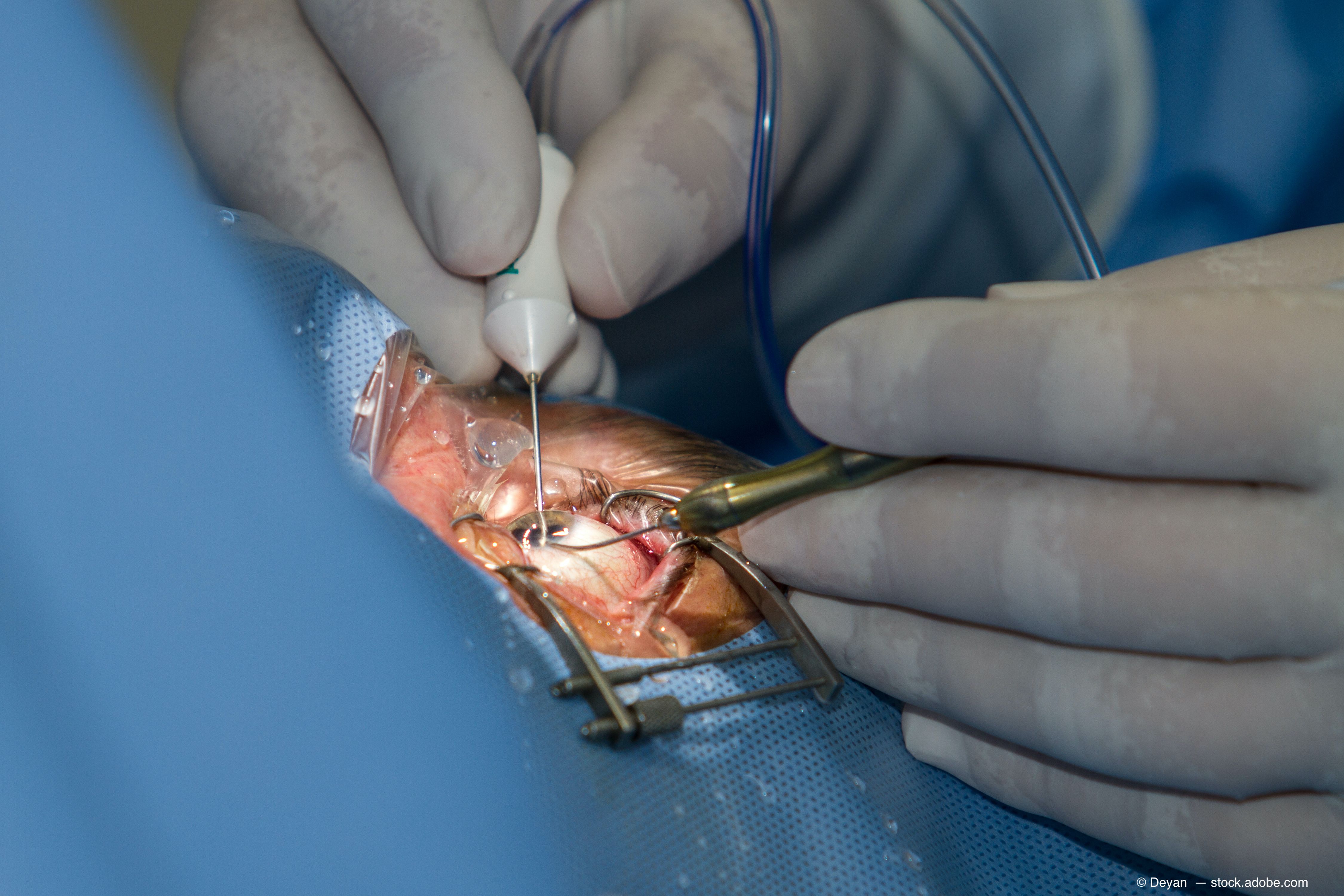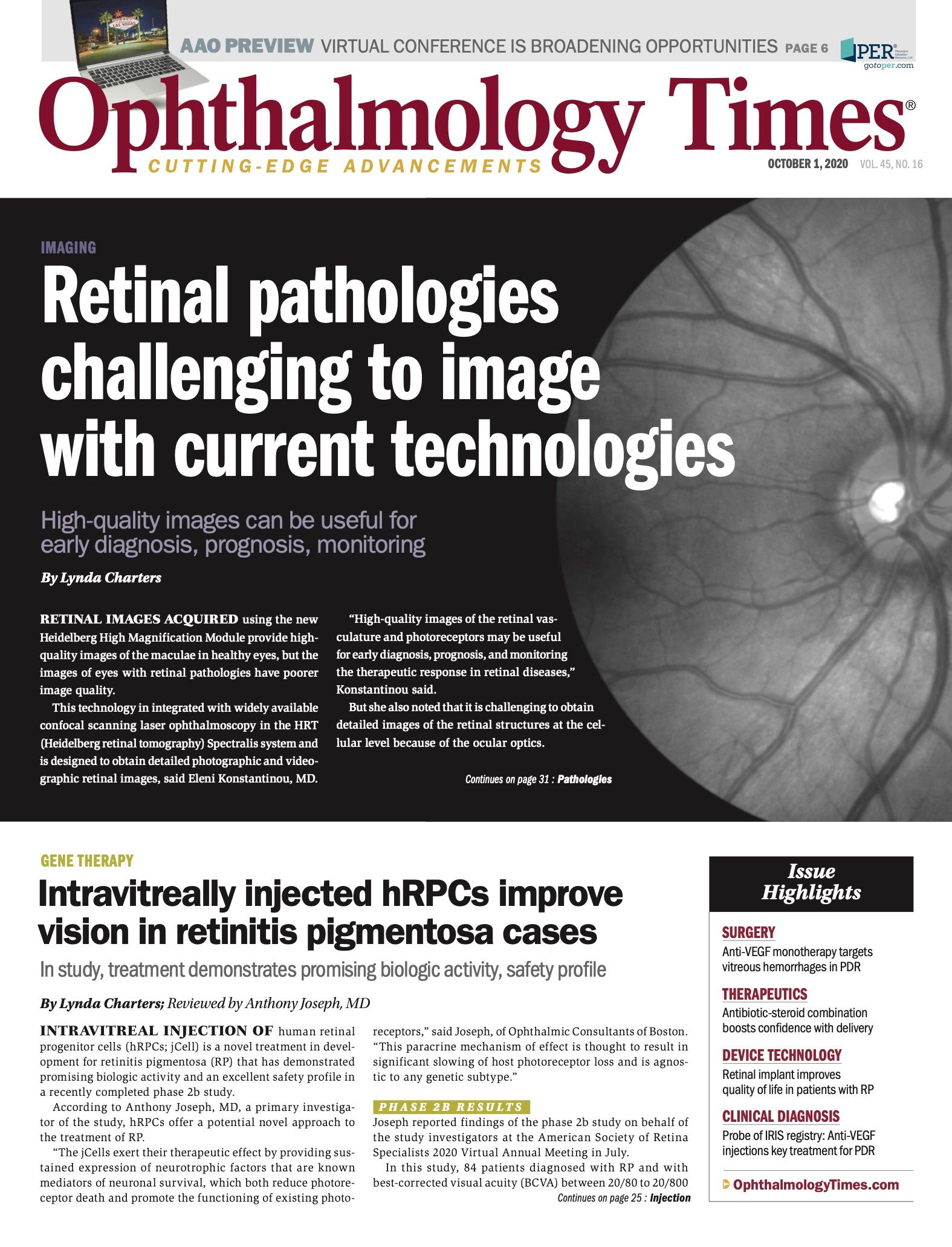- COVID-19
- Biosimilars
- Cataract Therapeutics
- DME
- Gene Therapy
- Workplace
- Ptosis
- Optic Relief
- Imaging
- Geographic Atrophy
- AMD
- Presbyopia
- Ocular Surface Disease
- Practice Management
- Pediatrics
- Surgery
- Therapeutics
- Optometry
- Retina
- Cataract
- Pharmacy
- IOL
- Dry Eye
- Understanding Antibiotic Resistance
- Refractive
- Cornea
- Glaucoma
- OCT
- Ocular Allergy
- Clinical Diagnosis
- Technology
Intravitreal implant offers anatomic, visual improvement
Study examines use of fluocinolone acetonide for treating DME in patients.

This article was reviewed by Victor H. Gonzalez, MD
The fluocinolone acetonide intravitreal implant (Iluvien, Alimera Sciences), which treats diabetic macular edema (DME), showed significant decreases in the mean central subfield thickness (CST) from baseline, along with improved or stabilized visual acuity (VA), according to the 2-year results of an ongoing study.
The interim analysis of PALADIN, a phase 4 prospective observational study (NCT02424019), included 115 eyes (95 patients; mean age, 67 years) with DME (mean duration, 4.7 years; range, 1-13) treated with the fluocinolone implant at 0.2 µg/day.
Related: Clinical trial outcomes for macular edema don’t translate to ‘real-world’ settings
The patients were evaluated on day 1, week 1, and month 2 after implantation and then quarterly from months 3 through 24. The VA was stratified by 20/40 or better (n = 39) and worse than 20/40 (n = 76).
The best-corrected visual acuity (BCVA), central foveal thickness (CST), and IOP were recorded at baseline and after treatment.
Data from up to 36 months of previous treatments, as well as VA and CST, also were collected, according to Victor H. Gonzalez, MD, who is in private practice in McAllen, Texas.
Related: Researchers advocate for intraoperative intravitreal steroid during cataract surgery in DME eyes
Stabilized or improved vision with implant
All patients had undergone previous treatments for DME, and regardless of VA, all had a progressive decrease in BCVA over 24 months before treatment with the fluocinolone implant. In the group with VA of 20/40 or better, the baseline mean BCVA was 76.9 letters; in the group with VA worse than 20/40, 53.4 letters.
Undertreatment noted
During the 2 years before study enrollment, most patients had received fewer than 4 injections, indicating significant undertreatment, Gonzalez said.
At month 24 following treatment with the implant, the group with VA of at least 20/40 and the group with the worse VA had BCVA increases to 77.8 letters and 56.4 letters respectively, or the VA was stable, according to Gonzalez.
“The treatment stabilized or improved the vision, with most of the patients receiving [fewer] than 4 injections during the 2-year follow-up period,” he said. Most patients did not require rescue therapy for at least 1 year.
Related:Bowtie artifacts: Clinical biomarkers for center-Involving DME?
After implantation, the mean CST dropped significantly from day 7 (P < .001) and remained decreased for all time points out to month 24 (P < .001).
The decreases in CST appeared more consistent with the continuous treatment provided by the implant compared with before study enrollment; 42.2% of patients had a CST of 300 µm or less at 2 years compared with 33.6% at baseline.
The mean IOP did not vary substantially after patients received the implant. Any IOP elevation was managed with topical medications.
Gonzalez noted that in most patients, sustained continuous release of fluocinolone led to a significant reduction in the mean CST from the baseline value to month 24 after implantation.
Related: Subthreshold laser may reduce intravitreal injections for DME
Conclusion
“We saw an increased percentage of eyes with CST of 300 µm or less at month 24,” he concluded. “As a result, the vision either stabilized or improved with 1 or fewer additional treatment annually in most patients. There was a patient-friendly treatment shift, with more than 50% of patients receiving [no more than 1] treatment annually to achieve the reported gains in vision. The IOP profile was predictable and manageable in all patients.”
Read more by Lynda Charters
--
Victor H. Gonzalez, MD
e:maculadoc@aol.com
Gonzalez is a paid consultant to and receives research support from Alimera Sciences.

